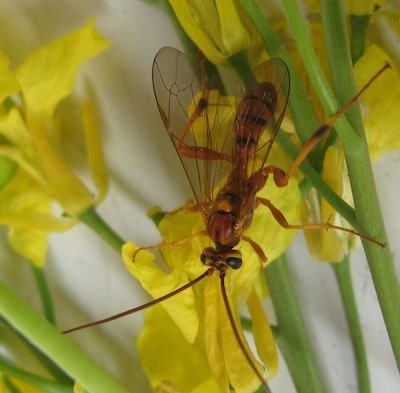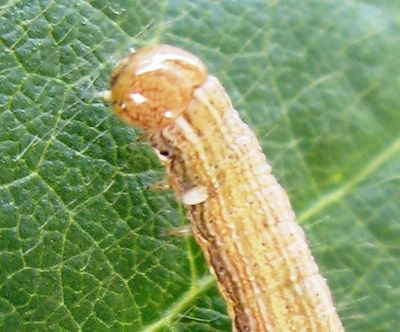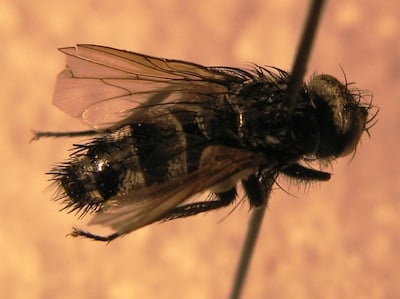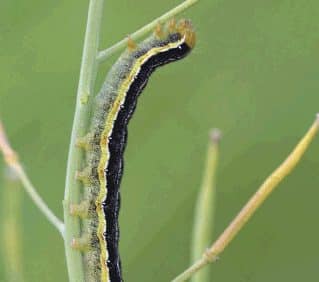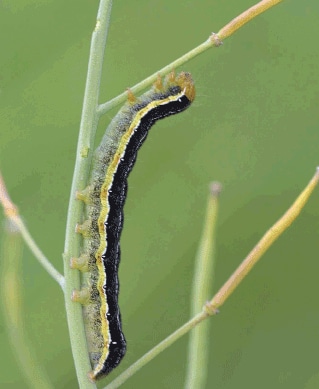
Bertha armyworm is one pest that can do a lot of damage in a short time. They’re large and eat a lot. Even within an area showing low risk on provincial maps, hot spots can flare up. (Click here for scouting tips.)
When scouting, check at least five separate areas of the field. The more areas the better. Checking just one spot is more likely to give the wrong answer. If counts are close to threshold, keep looking. As Alberta Ag entomologist Scott Meers says, “If the action level is 20 per square metre and you find 17, look more closely to make sure you’re right.”
Economic damage is to the pods. Leaf feeding late in the season doesn’t do much to affect yield unless numbers are well above threshold and plants are being stripped. If counts are above threshold, spray just as pod feeding is about to start. Note that bertha armyworms may continue eating on green moist canola on the bottom of the swath, so early cutting is not an effective management alternative.
Choose products based on pre-harvest intervals. Pre-harvest intervals range from 30 days to 1 day, depending on the product. Choose one that suits the likely cutting date.
Beneficials: Bertha armyworm populations are taken down by fungal and viral diseases as well as by various insects, including Banchus wasps and Tachinid flies. This beneficial effect may be more noticeable the following year, but reduced feeding can still occur in the current year. Infected berthas could still be part of the threshold count, unless they’re hanging off the plant and clearly near death. Another clue that death is imminent is the presence of fly eggs or breathing scars from the larvae of the parasitic flies near the bertha’s head. One or two berthas with this condition will not be a factor in the spray decision. But if most berthas have this egg cluster near the head, this may influence the decision to spray if the count is borderline for threshold.
